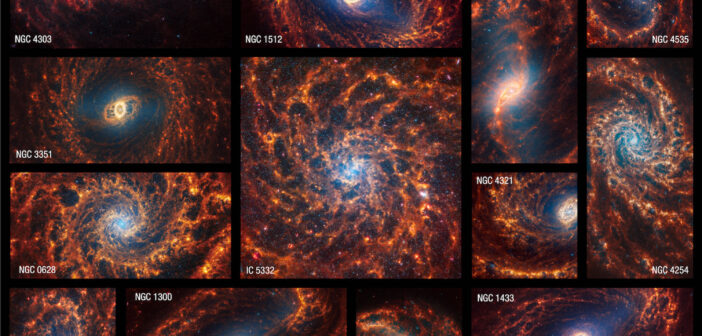You may have seen these images individually, but here they are in one grand ensemble: the 19 nearby spiral galaxies surveyed with JWST by the Physics at High Angular resolution in Nearby GalaxieS (PHANGS) collaboration. These galaxies have also been observed with the Atacama Large Millimeter/submillimeter Array, the Very Large Array, and the Hubble Space Telescope, providing a multi-wavelength view of some of the Milky Way’s neighbors. The JWST images (click the image above for the full view) show filamentary structures of warm gas and reveal young star clusters that were hidden in previous observations. In this article, Thomas Williams (University of Oxford) and collaborators present the full PHANGS–JWST dataset and describe the image-processing pipeline developed for these observations. Though there already exists an official pipeline for processing JWST data, the authors’ method provides an alternative that is particularly well suited to observations of bright, extended objects such as nearby galaxies. This project is open source, meaning that all are welcome to squash bugs and suggest improvements. To learn more about the processing method that led to these fantastic images, be sure to check out the full article linked below.
Citation
“PHANGS-JWST: Data-processing Pipeline and First Full Public Data Release,” Thomas G. Williams et al 2024 ApJS 273 13. doi:10.3847/1538-4365/ad4be5
